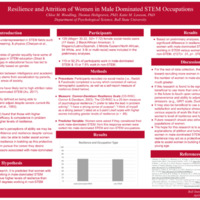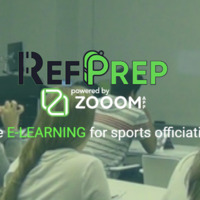Browse Exhibits (81 total)
Cailon Nicoson | Between a Rock and a Hard Place: How Transportation into Stories Representing Protagonist’s Criminal Behavior Affects Reader’s Empathy
Previous research has found that reading fictional stories can increase empathy in individuals who read it (Bal & Vetkamp, 2013; Dodell-Feder & Tamir, 2018; Kaufman & Libby, 2012; Stansfield & Bune, 2014). One important factor that contributes to fiction’s potential empathy-teaching effect is the concept of transportation; transportation is the reader’s ability to “transport” themselves into the story, particularly in the shoes of the protagonist, to better understand how they themselves would react in the character’s situations (Bal & Vetkamp, 2012). The current study analyzed the effect transportation into a story in which the protagonist engaged in a criminal act (e.g., substance abuse and theft) could have on the reader. Participants were asked to read two texts each; one arranged as a list of facts and the second being an emotionally-charged, third-person perspective of either the protagonist’s engagement in substance abuse or theft. One group received one compilation of facts regarding the protagonist’s engagement in either substance abuse or theft and one emotionally-charged account of the protagonist’s engagement in the offense not represented in the first story.
Faculty Mentor: Dr. Kristin Ritchey and Dr. Thomas Holtgraves
Department of Psychological Sciences and Criminal Justice/Criminology
Undergraduate
Honors College
Caitie Flower | Evaluating a Course for Training Undergraduate Teaching Assistants
An 8-week course was developed to train undergraduate teaching assistants on a variety of ethical, professional, and practical topics. One semester of pre-and post-test data was collected to measure increases in students’ knowledge, skills, and consideration of a teaching-related career. Preliminary results indicate some increases in students’ skills across the semester.
Faculty Mentor: Dr. Kristin Ritchey
Department of Psychological Science
Undergraduate
Camryn Zeller | More Knowledge and Less Sleep: Sleep Patterns in Nursing Students
There is precedent that nurses and students have unhealthy sleep patterns and sleep hygiene. The purpose of current research is to determine if a student’s year in school (i.e., first year, second year, etc.) is related to any unhealthy sleep patterns or hygiene they may present. A survey including the PSQI, the Sleep Hygiene Knowledge subsection of the SHAPS, and a survey of demographics screening out those with disordered sleep will be used to determine sleep quantity, quality, and hygiene knowledge patterns across cohorts. If there is evidence of poor sleep quality, quantity, or hygiene knowledge in this population, it indicates that more research should be done on how severe these variables may impact performance of nursing students. Highlighting specific years or times where these unhealthy practices may be more prevalent could help determine when sleep education should be utilized to help the population build healthy sleep habits before going into the nursing field. It will also provide data for future studies on what patterns of sleep to expect in this population.
Faculty Mentor: Dr. Thomas Holtgraves
Psychological Science
Graduate
Cassandra Zeigler | Emotion Dysregulation, Attachment Insecurity, and Perceptions of Justice and Fairness Among Emerging Adults in Romantic Relationships
Attachment styles in adulthood describe individual approaches to interacting and behaving interpersonally, or patterns of secure and insecure attachment orientations in romantic relationships (Bowlby, 1969). While previous research has demonstrated that insecure attachment styles are related to difficulties with regulating emotions (Gross & John, 2003; Owens et al., 2018; Winterheld, 2016), present literature has not addressed these associations in both members of relationship dyads using counterbalanced self-report measures. The current study will examine the associations between insecure attachment styles and emotion dysregulation among couples in romantic relationships. This study will employ a cross-sectional survey design with a sample of approximately 84 dyads of college students to obtain a medium effect size (r = .30) and a power level of 80% (Faul et al., 2007). It is hypothesized that individuals with lower levels of anxious and avoidant attachment tendencies will also report fewer difficulties with emotion regulation strategies, and couples are expected to report a high degree of similarity on both measures relative to each other. These anticipated findings would align with the similarity hypothesis that individuals choose dating partners with the same attachment style as themselves (Strauss et al., 2012) and the concept of assortative mating, that individuals seek partners with similar traits to their own (Macrae et al., 2008). Results will be analyzed with a series of Pearson’s correlation coefficient (r) tests to examine associations between variables at the individual level and to determine the degree of nonindependence, or the extent of similarity between the two members of the dyadic unit.
Faculty Mentor: Thomas Holtgraves
Psychological Sciences
Graduate
Chloe Woodling | Resilience and Attrition of Women in Male Dominated STEM Occupations

Gender disparities in occupation may greatly have to do with attrition rates of women in male-dominated STEM fields. These attrition rates may be due to sexism, perception of ability, and other various stressors associated with being in male-dominated occupations. It is important to understand differences between women who stay in STEM and those who leave to assist in addressing the gender gap in STEM occupations. Previous research has found that individuals with high levels of resilience are more likely to cope well with various adversities. Based on these findings, it is hypothesized that women with STEM degrees working in male-dominated STEM occupations will have higher levels of resilience than women with STEM degrees working in non-STEM occupations. By determining whether resilience is a protective factor for women in STEM, we may be able to begin building resilience level from a young age. A preliminary independent samples t-test revealed that there is no significant difference in resilience levels between women with male-dominated STEM degrees working in STEM versus women with male-dominated STEM degrees working in non-STEM. For the rest of data collection, the PI will be working toward recruiting more women in non-STEM fields as the number of women in male-dominated STEM is much greater.
Faculty Mentors: Dr. Thomas Holtgraves & Dr. Katie M. Lawson
Department of Psychological Science
Graduate
Chris Bucker, Robert Klueber, Julian Price, James Shallcross | Choose Up

This web page exists to connect a person with a pitch, the founder, to investors willing to support the business proposal. Founders can then find developers, if they do not have their own team, that will help build the business into reality.
Faculty mentor: Dr. Huseyin Ergin
Computer Science
Undergraduate
Clay Reber, Matt Schrag, Riley Stetler, Jacob Deffendall, Casey Haskins | Betterflye Mobile

Betterflye is a social impact platform designed to connect organizations with volunteers and encourage social good via gamification; our project is to expand the Betterflye ecosystem with the addition of a cross-platform mobile application that allows users to access the platform.
Betterflye Mobile is built on the Flutter Framework and the mobile application communicates with a REST API written in PHP. The main focus of the app has been in building a robust check-in and check-out system using QR Code scanning. Users have a unique QR code assigned to them that can be scanned by an initiative manager to check them into an initiative. Alternatively, if initiatives have self-check-in enabled, users can scan an initiative’s QR code in order to check themselves in or out.
The repository is configured with a CI pipeline that runs automated tests, checks for formatting errors, and publishes code coverage reports on each pull request. When any commits are merged to either the develop or master branch, there is a CD pipeline which builds an app bundle, deploys it to an internal testing track in Google Play, and posts a notification in the team’s Slack channel. The team has embraced agile and scrum methodologies and conducts plannings, standups, reviews, and retrospectives each sprint/review cycle.
Faculty Mentor: Huseyin Ergin
Computer Science
Undergraduate
Colette Delawalla | Development of the Impulsive Action Questionnaire
Impulsivity is empirically associated with externalizing psychopathology such as substance use (Berg et al., 2015), antisociality (Whiteside et al., 2005), ADHD (Winstanley et al., 2006), and internalizing psychopathology such as fear and distress disorders (King et al., 2018), Borderline Personality Disorder and Bipolar Disorders (Henry et al., 2001). The widely used UPPS-P Model of Impulsivity suggests the construct of impulsivity reflects: Urgency (positive and negative), (lack of) Perseverance, (lack of) Premeditation, and Sensation-seeking (Lynam et al., 2007). Arguably the least well understood and most consequential facet of impulsivity is Urgency; the propensity to partake in rash action under the influence of intense positive or negative emotion (Whiteside & Lynam, 2001; Cyders & Smith, 2007). A key gap in our understanding of these mechanisms is if Positive and Negative Urgency are two separate constructs, or if they represent two variations of the same underlying mechanism. One way to evaluate if Urgency is one or two separate constructs is to see if individuals take different specific impulsive actions in the face of positive versus negative affect. As such, this study proposes the development of a scale to assess specific categories of behavior empirically associated with impulsivity. This study will gather one round of data, via Amazon’s Mechanical Turk, of participants’ level of trait impulsivity, the types of impulsive actions they have taken in the last 30 days (ranging in three levels of severity; mild, moderate, severe), and how problematic those actions were to their long-term goals.
Faculty Mentor: Thomas Holtgraves
Psychological Science
Graduate
Colin Thomas, Michael Domaracki, Levi Connelly, Ryan Slack | Automating Access Control for a Custom E-Commerce Platform

Zooom App is a company who provides educational material for athletes and athletic officials. Since 2015, their main clientele have been large organizations; however, during the COVID-19 pandemic, Zooom App started serving customers at a smaller scale, with their new RefPrep course series. With a larger customer base, the task of managing payments and access to content became too much for one person to do. Creating a seamless, headache-free experience for customers buying content online has always been a challenge, especially when it comes to digital products, such as SAAS (software-as-a-service). From a customer perspective, the purpose of this project is to fully implement an automated access control system which allows customers to securely pay for digital content from our client and receive immediate access to new subscriptions. From a client perspective, the goal is to completely remove any intermediate steps required for the client to receive payment and grant customers access to purchased content.
Faculty Mentor: Dr. Huseyin Ergin
Department of Computer Science
Undergraduate
Daniel Council | A Geographic Approach to Understanding Crime in Indiana
Crime mapping is a nearly 200-year-old discipline used by geographers, criminologists, and analysts to study criminal patterns and trends. As crime data has become more readily available to the public through online services such as the FBI’s Crime Data Explorer, the potential for crime mapping has grown extensively. The purpose of this thesis is to examine how crime mapping has evolved and provide an example of its practice by analyzing crime in Indiana.
Faculty Mentor: Dr. Jörn Seemann
Department of Geography
Undergraduate
Honors College
